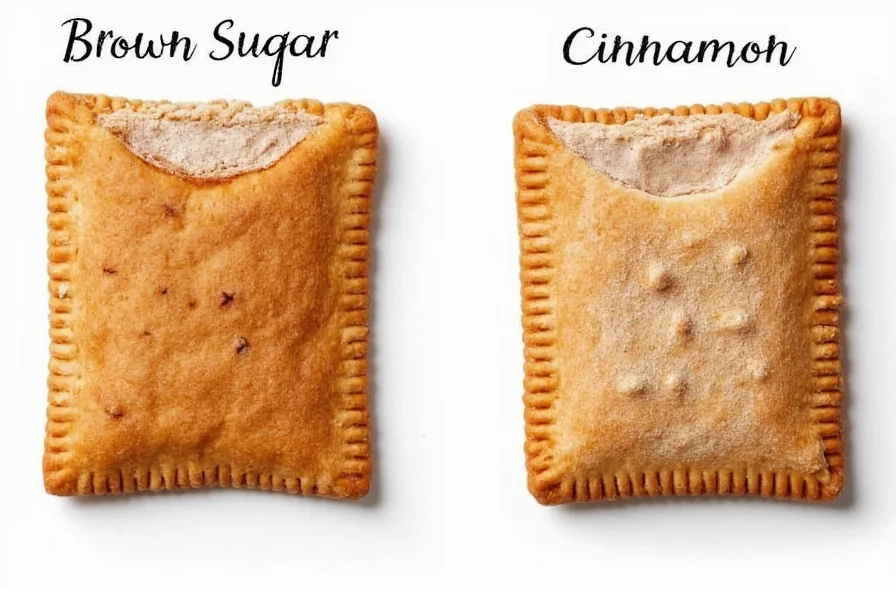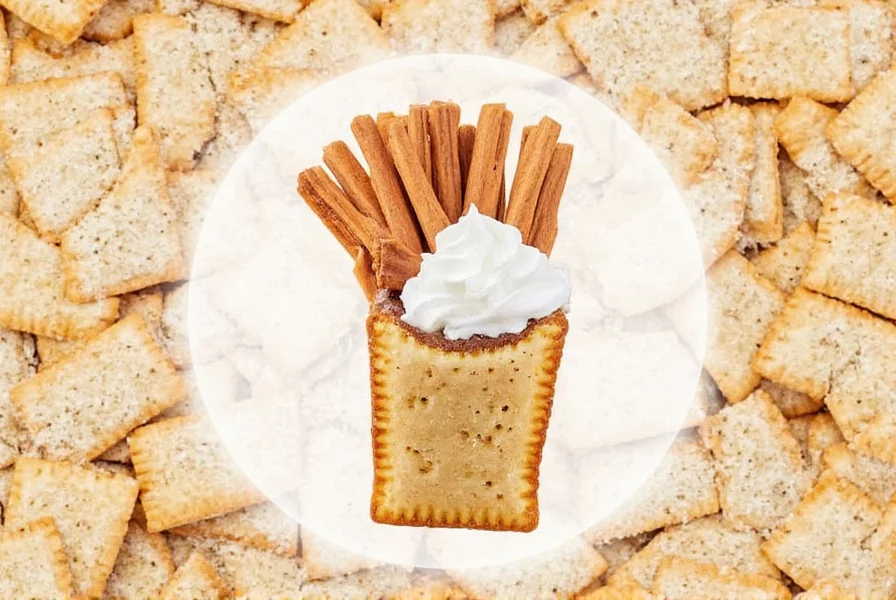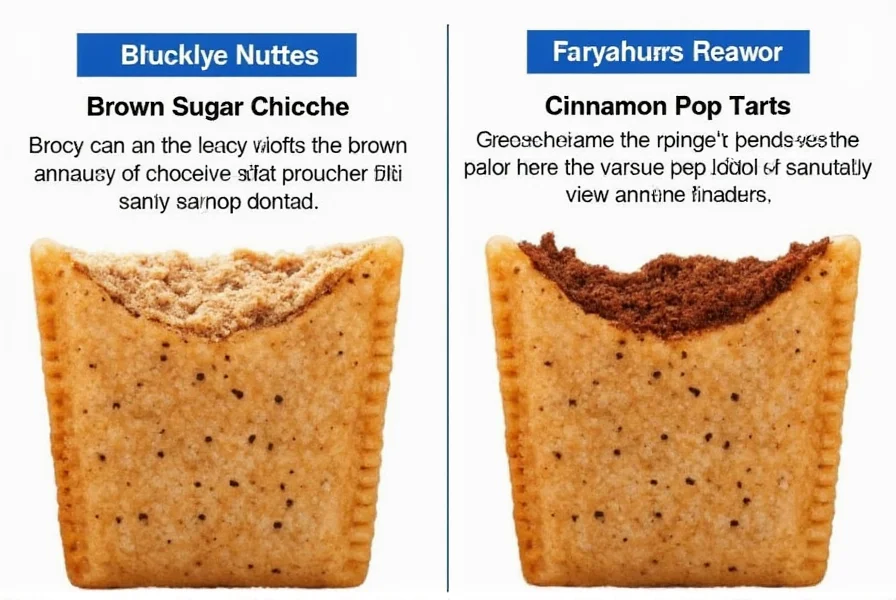Brown sugar cinnamon pop tarts offer a distinctive twist on the classic breakfast pastry that's captured the attention of pastry enthusiasts. Unlike their white sugar counterparts, these treats incorporate brown sugar in both the filling and often the crumb topping, resulting in a more nuanced flavor experience that many describe as reminiscent of homemade cinnamon rolls or apple pie. The molasses content in brown sugar reacts differently during baking, creating subtle caramelization that enhances the overall taste without overwhelming the signature cinnamon spice.
What Sets Brown Sugar Cinnamon Pop Tarts Apart
The key difference lies in the sugar chemistry. Brown sugar contains molasses, which brings moisture and acidity that interact with other ingredients during baking. This chemical reaction produces:
- Deeper caramel notes instead of simple sweetness
- Enhanced cinnamon flavor perception
- Softer texture due to increased moisture retention
- More complex aftertaste with subtle toffee-like qualities
Food scientists note that the pH level of brown sugar (around 5.4) compared to white sugar (around 7.0) affects how cinnamon compounds are released during consumption, making the spice profile feel warmer and more rounded in brown sugar versions.
| Feature | Brown Sugar Cinnamon | Regular Cinnamon Sugar |
|---|---|---|
| Sugar Base | Brown sugar (with molasses) | White granulated sugar |
| Flavor Profile | Rich, caramelized, complex | Bright, straightforward sweetness |
| Texture | Slightly softer, more moist | Firmer, crispier |
| Aftertaste | Warm, lingering spice | Cleaner finish |
Ingredient Science Behind the Flavor
The magic happens through the Maillard reaction—when the amino acids in the pastry dough interact with the reducing sugars in brown sugar at baking temperatures. This creates hundreds of new flavor compounds that don't form with white sugar alone. The molasses in brown sugar contains invert sugars that caramelize at lower temperatures, producing that distinctive toffee-like background note.
When examining brown sugar cinnamon pop tarts ingredients, you'll typically find:
- Light or dark brown sugar (affects intensity of molasses flavor)
- Cinnamon with higher cinnamaldehyde content for better pairing
- Sometimes a touch of vanilla to enhance the caramel notes
- Raised fat content in the dough to complement the richer filling

Availability and Product Variations
While Kellogg's introduced limited edition brown sugar cinnamon pop tarts in select markets, they remain less widely available than the classic version. Seasonal releases typically appear in fall and winter when consumers seek warmer flavor profiles. Some regional grocery chains have developed their own store-brand versions that often use a higher ratio of brown sugar to create a more pronounced flavor difference.
For those searching where to buy brown sugar cinnamon pop tarts, check:
- Seasonal grocery displays (particularly during holiday seasons)
- Warehouse clubs during limited-time promotions
- Online retailers during specialty flavor releases
- International markets (some countries receive different flavor variations)
Culinary Applications Beyond Breakfast
Food enthusiasts have discovered creative uses for brown sugar cinnamon pop tarts that leverage their enhanced flavor profile. The richer taste makes them particularly suitable for:
- Crumbling as pie crust alternatives for apple or pear desserts
- Creating French toast casserole with layered pastry pieces
- Blending into milkshakes for a cinnamon roll-inspired treat
- Crumbed topping for bread pudding or baked fruit desserts
Professional bakers note that the brown sugar version's moisture content makes it less prone to becoming soggy when used in layered desserts compared to the regular version—a valuable consideration for those experimenting with homemade brown sugar cinnamon pop tarts recipe adaptations.
Homemade Adaptation Tips
For those interested in recreating the experience, the key to authentic brown sugar cinnamon pop tarts vs regular flavor at home involves:
- Using a 50/50 blend of light and dark brown sugar for balanced complexity
- Adding a pinch of espresso powder to enhance caramel notes (without coffee flavor)
- Letting the filling rest for 30 minutes before baking to allow sugar dissolution
- Brushing finished pastries with brown butter glaze instead of traditional icing

Flavor Pairing Recommendations
The deeper flavor profile of brown sugar cinnamon pop tarts creates interesting pairing opportunities that differ from regular versions. Beverage experts recommend:
- Medium-roast coffee with chocolate notes
- Apple cider or spiced chai tea
- Bourbon-infused cream for dipping
- Vanilla or cinnamon ice cream for à la mode presentations
Unlike regular cinnamon sugar pop tarts, the brown sugar version holds up better with stronger flavors without becoming cloying—a characteristic that explains its growing popularity among adult consumers seeking more sophisticated snack options.











 浙公网安备
33010002000092号
浙公网安备
33010002000092号 浙B2-20120091-4
浙B2-20120091-4